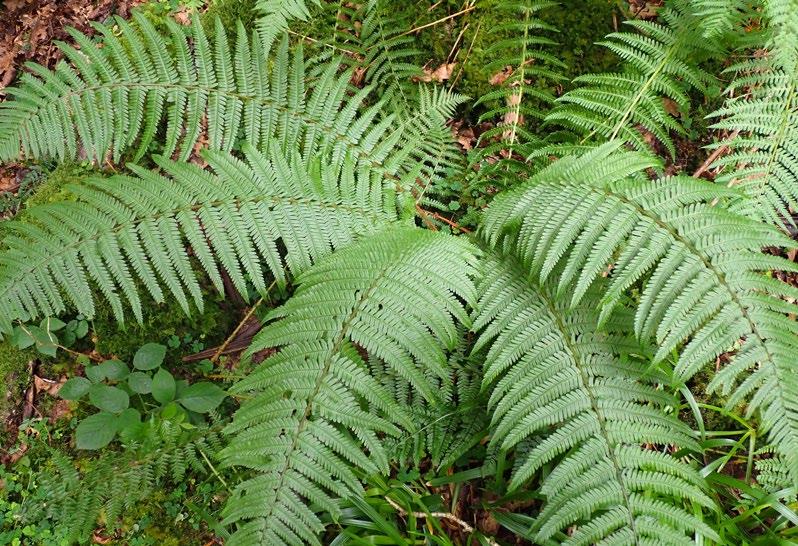
5 minute read
Dryopteris pseudodisjuncta in England Anthony Pigott
Dryopteris pseudodisjuncta in England
ANTHONY PIGOTT
Advertisement
About two years ago, while attending to a potted section of my large Dryopteris living collection, I noticed a plant which struck me as looking like Dryopteris pseudodisjuncta. I knew I had one living plant of pseudodisjuncta, from Norway, but I soon realised that this was not it. It was on my database just as ‘D. affinis complex’ from the South Lakes in 1995, but on checking my original field notes, I found that I’d noted that it was not obvious what morphotype it was but that its pinnule shape was rather like pseudodisjuncta. I’d taken a frond for an herbarium specimen and taken a small piece to propagate. The fact that my son and daughter were born in 1995 and 1996 respectively may explain why I’d not paid more attention to it nearer the time! The propagated plant had probably languished in its early years and remained small and unnoticed.
Having had a good look at the now quite strongly growing plant, I was quite convinced it
One of two plants of Dryopteris pseudodisjuncta found at the original location in the Lake District (Cumberland, v.c. 70), photographed July 2020. Alison Evans
was pseudodisjuncta but I thought that I should apply the usual ‘due diligence’, so I found the original herbarium specimen to check it was the same and went through the published descriptions for the taxon and looked at any verified images I could find. All worked out well. The DNA ploidy level has since been confirmed to be triploid, as it has for the Norwegian plant. This meant that this find is the only known record for England and the earliest known date for the British Isles. I informed the local county recorders of the record and we agreed not to publish the exact location due to the rarity and lack of any knowledge of population size. My original notes had only mentioned one plant. A recent search at the original site found two specimens.
Taxonomy
The taxonomy of the Dryopteris affinis complex has been controversial and is often confusing. There are at least 20 forms or morphotypes known that have been described and can reasonably be distinguished, of which around 12 have been recorded in the British Isles. Many of these have been formally described, variously as species, subspecies and varieties usually combined in supposed hierarchies. The most commonly followed formal scheme is probably that of Fraser-Jenkins from 2007. This scheme was adopted in Stace’s third edition of his Flora. In that, D. pseudodisjuncta is recognised at species level. Unqualified formal names in this article follow this treatment for clarity. More recently, formal treatments have gone in opposite directions with Stace (2019) reverting to one aggregate species in his 4th edition and Sell (2018) raising all recent formal subspecific names to species.
Dryopteris pseudodisjuncta was first named by Oberholzer and von Tavel in 1937 as ‘D. borreri var. pseudodisjuncta’. It was described as having the ‘habit of var. disjuncta [and the] indusia of D. filix-mas’. The taxon was treated as a synonym of D. affinis subsp. borreri by Fraser-Jenkins in 1980 and as Dryopteris pseudodisjuncta in 2007. It appeared in ‘Stace 3’ as D. pseudodisjuncta and in ‘Stace 4’ as D. affinis subsp. pseudodisjuncta.
Appearance
Whilst Dryopteris pseudodisjuncta has been associated with D. borreri and D. cambrensis, it is probably most likely to be confused in the field with D. affinis sensu stricto. This is, perhaps, no surprise given its name (disjuncta is the name of a form of D. affinis that is common in continental Europe). It shares a ‘neat’ appearance, flat fronds and a somewhat glossy upper surface. However, it is distinctive in that the indusium is noticeably thin and only just encloses the sporangia at maturity. The frond outline is obovate and it also has a distinctive pinnule shape, most noticeable in the lowest basiscopic one on each pinna, which is difficult to describe but which becomes easily recognisable with familiarity: a sort of kinked extended oval. See photographs on opposite page.
Distribution
The distribution of Dryopteris pseudodisjuncta in Europe is primarily in Germany, Austria, Norway, France and Switzerland with more recent reports from The Netherlands and Poland. It is better known in continental Europe, especially Germany where it has been more extensively written about, e.g. Döpp et al. (1963). In Britain, it was discovered near Dumfries in 2008 (Trewren, 2010) and has since been reported from Arran. Numbers at the three known sites appear to be very small, so although it may well be under recorded, there is clearly serious conservation concern in Britain.
Acknowledgements
I am very grateful to Libor Ekrt for working with me, in particular in measuring the genome size of many plants in my living collection.
References
Fraser-Jenkins, C.R. 1980. Dryopteris affinis: a new treatment for a complex species in the European Pteridophyte Flora.
Willdenowia 10: 107–15. Fraser-Jenkins, C.R. 2007. The species and subspecies in the
Dryopteris affinis group. Fern Gazette (UK) 18: 1–26. Pigott, A. 1997. Morphotypes of the Dryopteris affinis complex in Britain and Ireland. Affinis Watch, Special Issue (April 1997): 1–4. Sell, P.D. & Murrell, G. 2018. Flora of Great Britain and Ireland.
Volume 1. Cambridge University Press, Cambridge. Stace, C. 2010. New Flora of the British Isles (3rd edn).
Cambridge University Press, Cambridge. Stace, C.A. 2019. New Flora of the British Isles (4th edn).
C & M Floristics, Middlewood Green, Suffolk. Trewren, K. 2010. Dryopteris pseudodisjuncta – a new fern for
Britain. Pteridologist 5: 205–206. Von Tavel, F. 1937. Dryopteris borreri Newman und ihr
Formenkreis. Formenkreis Verhandlungen Der Schweizerischen
Naturforschenden Gesellschaft 118: 153–54. Döpp, W., Gätzi, W. & Oberholzer, E. 1963. Dryopteris borreri
Newman (D. paleacea Hand.-Mazz.) var. pseudodisjuncta v.
Tavel. Berichte Der Deutschen Botanischen Gesellschaft 76, no. 4.
Anthony Pigott
BSBI Referee for the Dryopteris affinis complex
anthony.pigott@btinternet.com
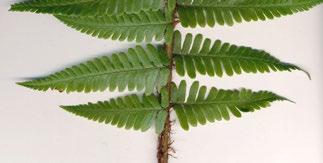
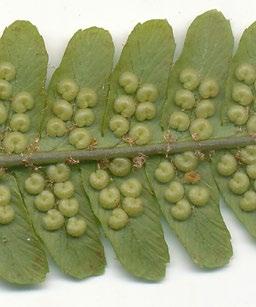

Herbarium specimen from the original record (top left); composite image of frond from plant propagated from original specimen (top right); lowest pinnae of frond from plant propagated from original specimen (bottom). Anthony Pigott
Second of two plants found recently near the original location. Alison Evans Immature (top) and ripe (bottom) sori on frond from plant propagated from original specimen. Anthony Pigott
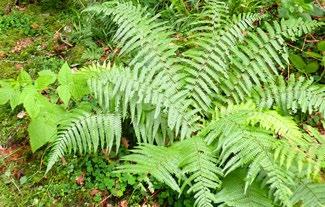
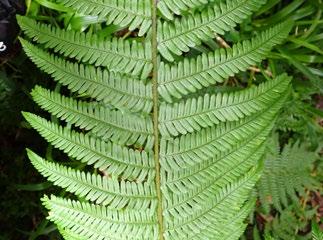
Mid-frond pinnae of plant recently found. Alison Evans










